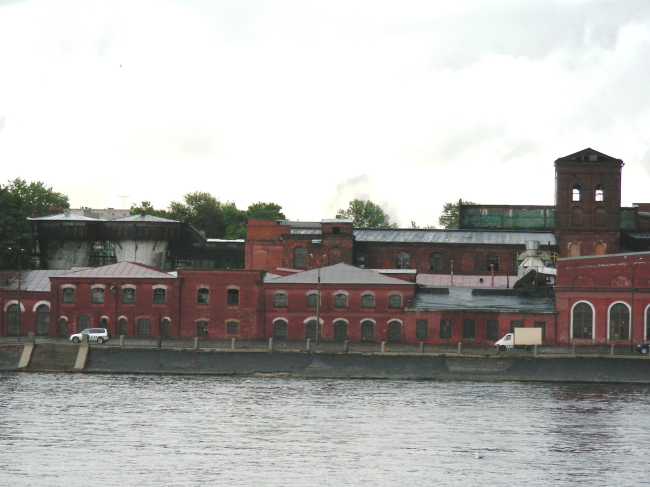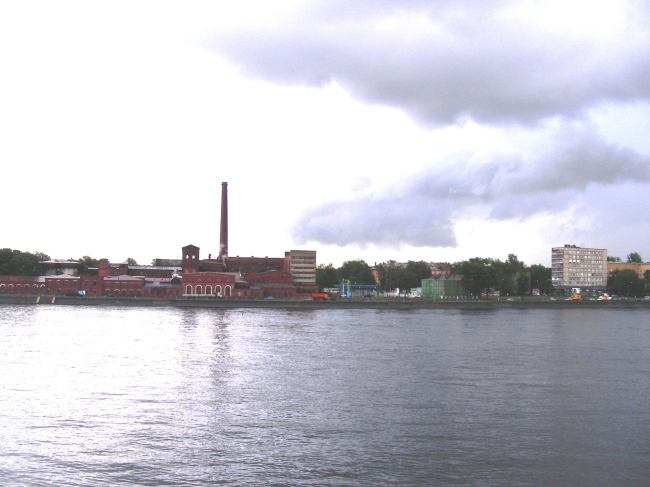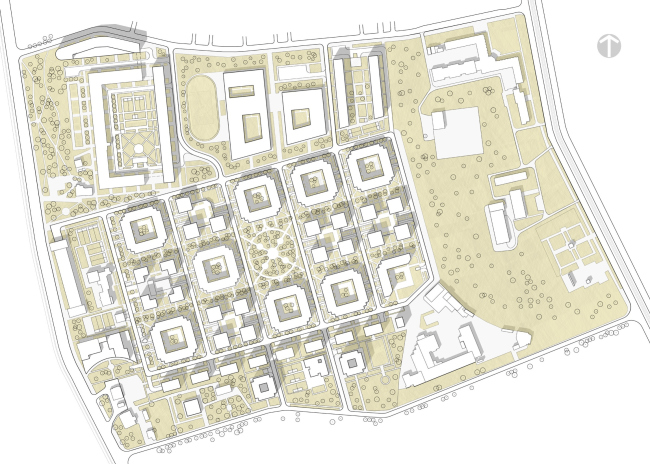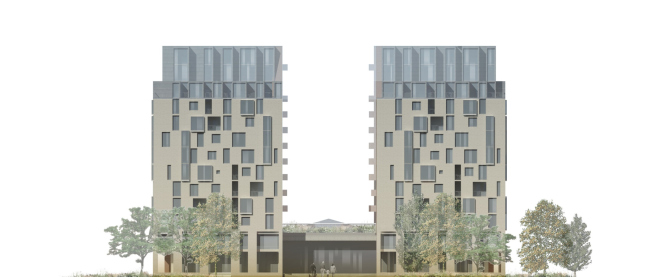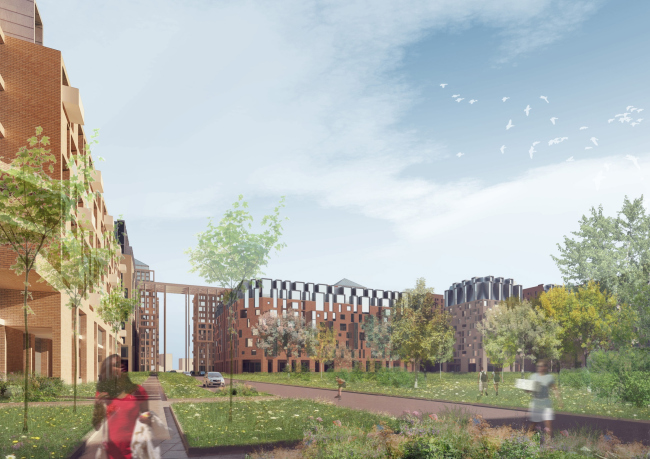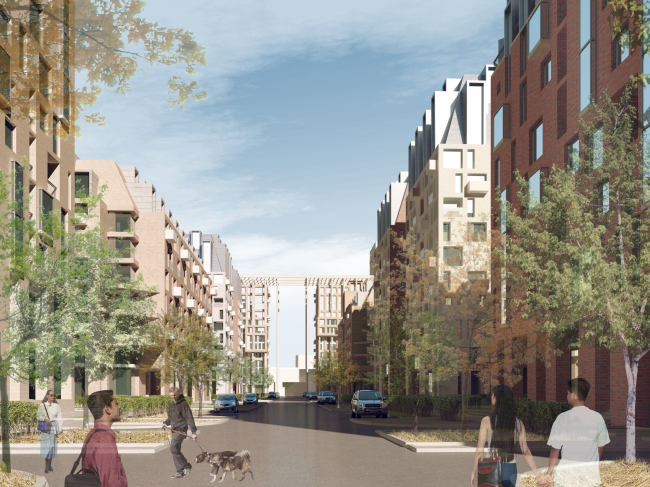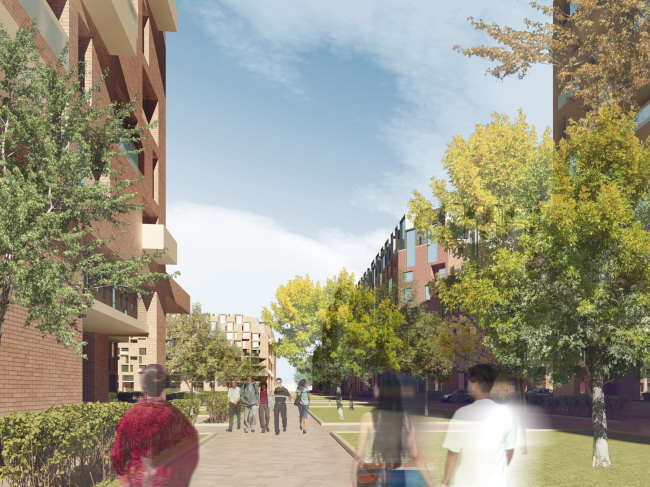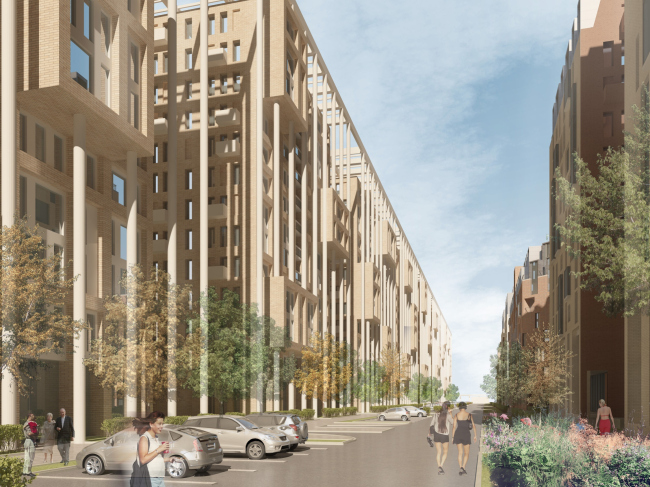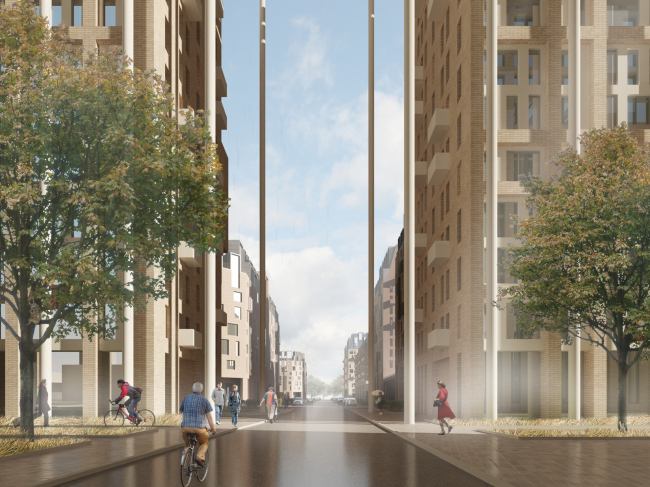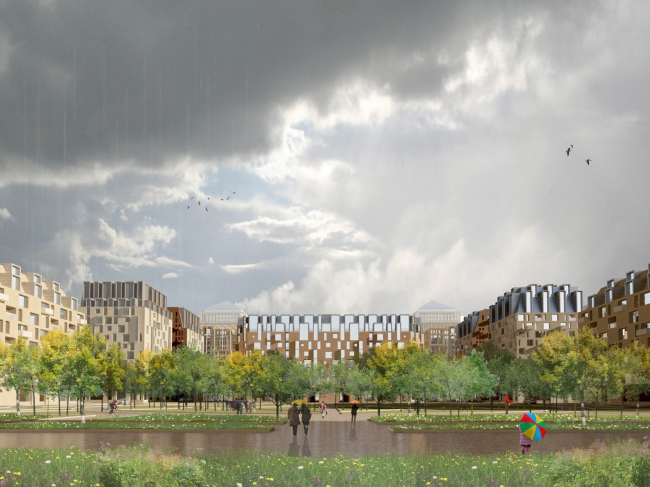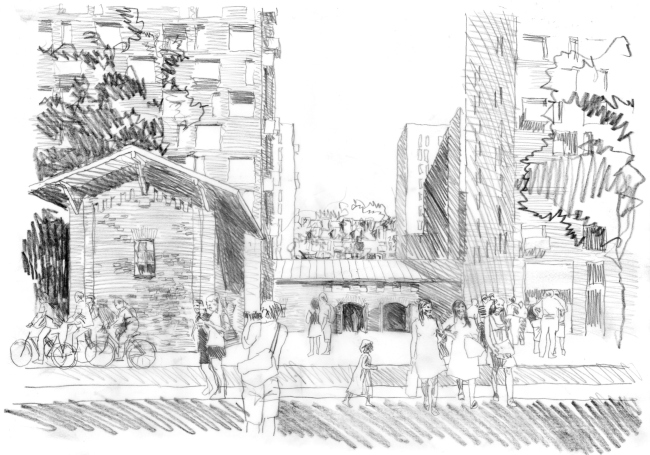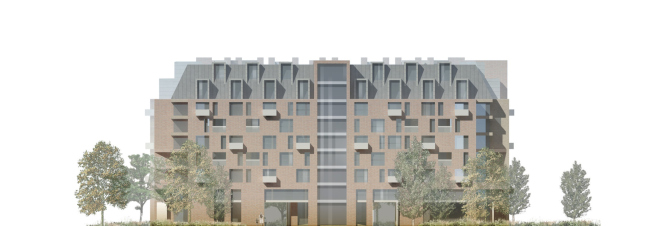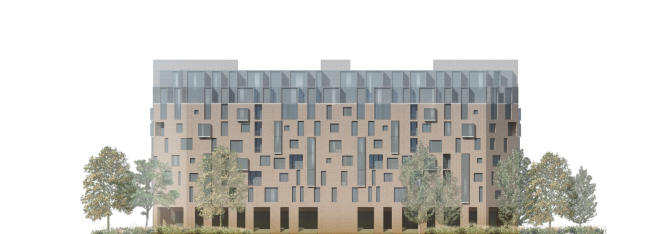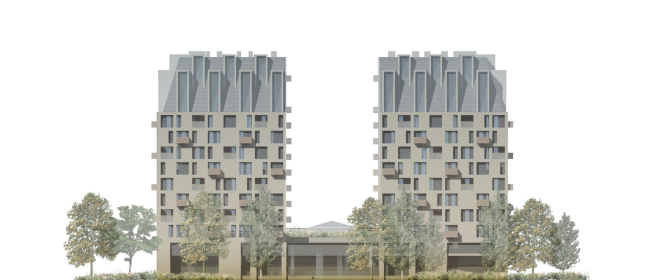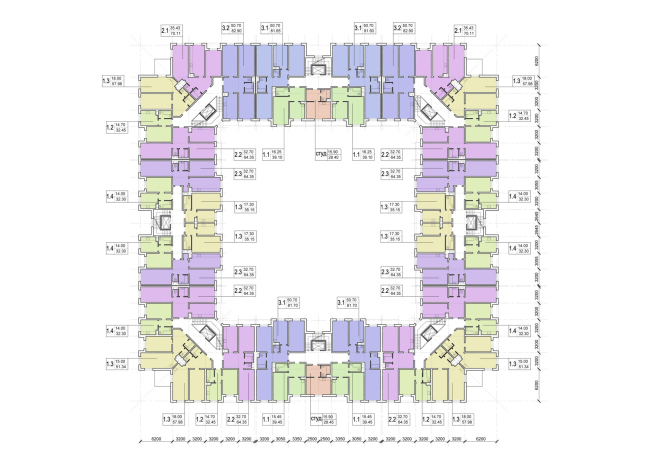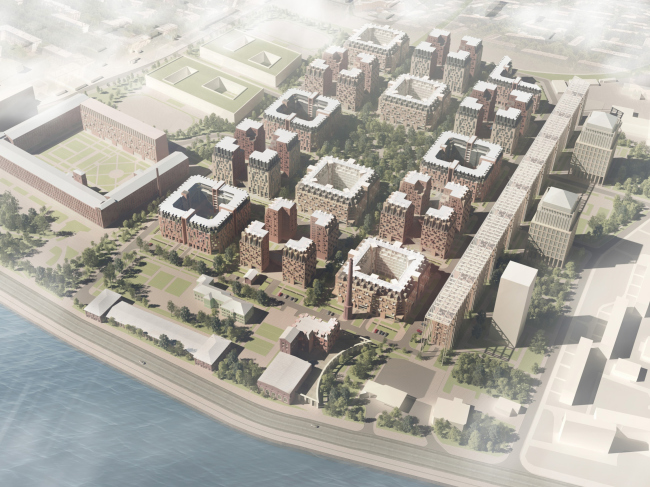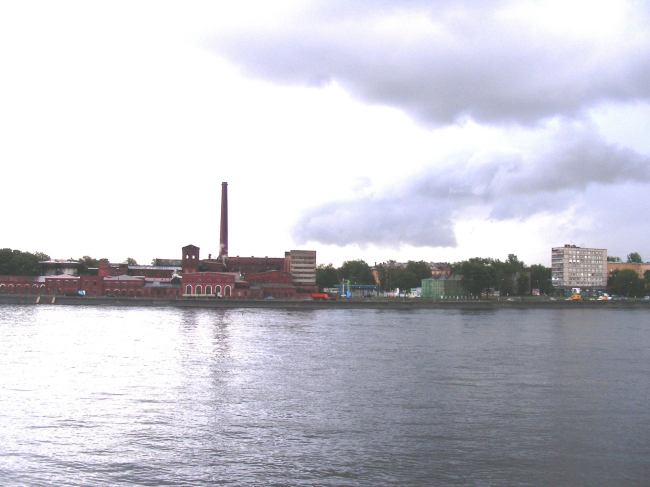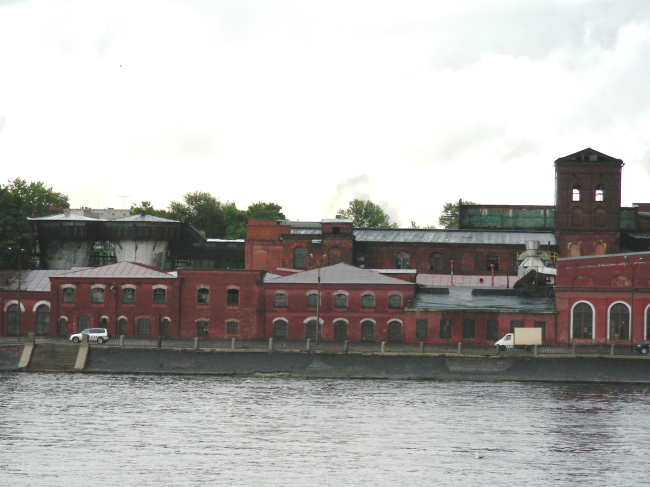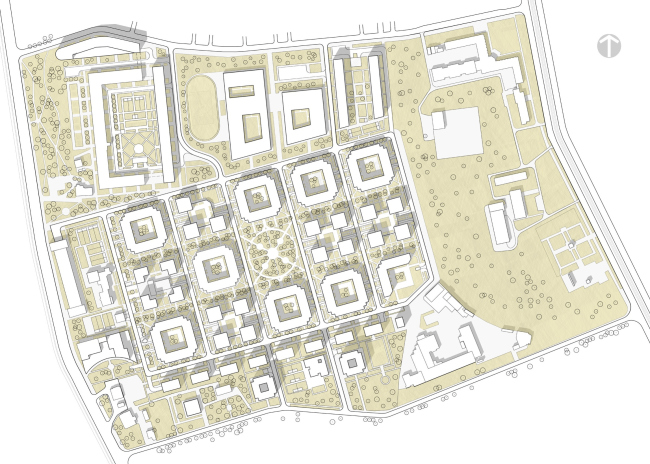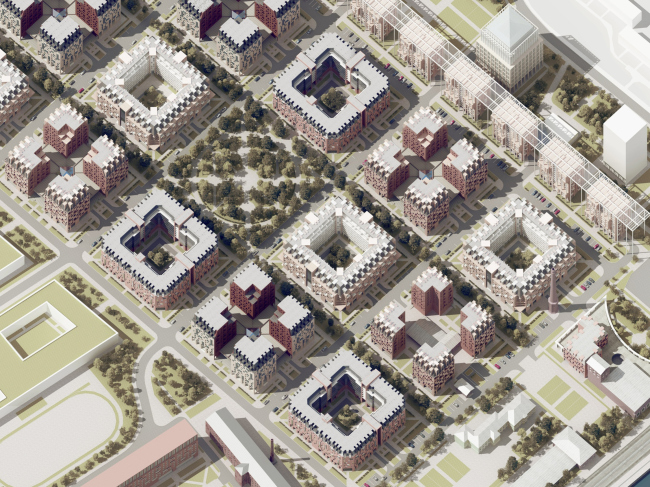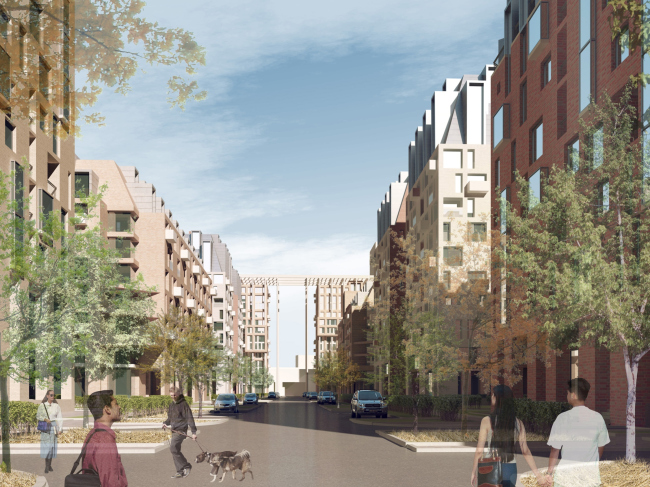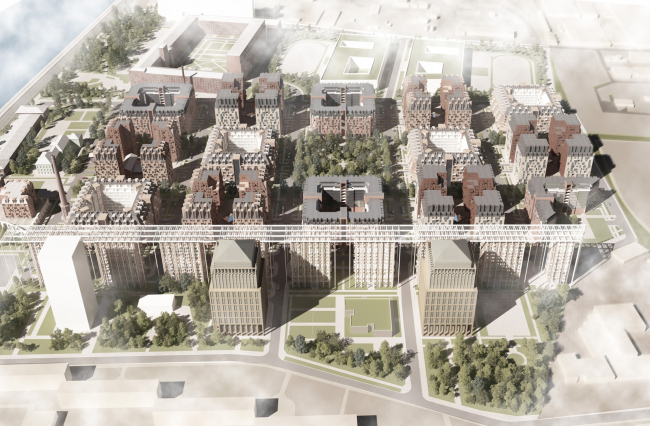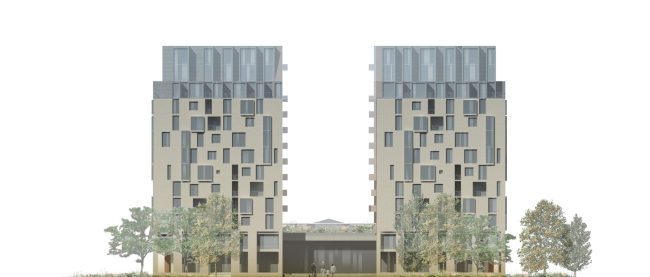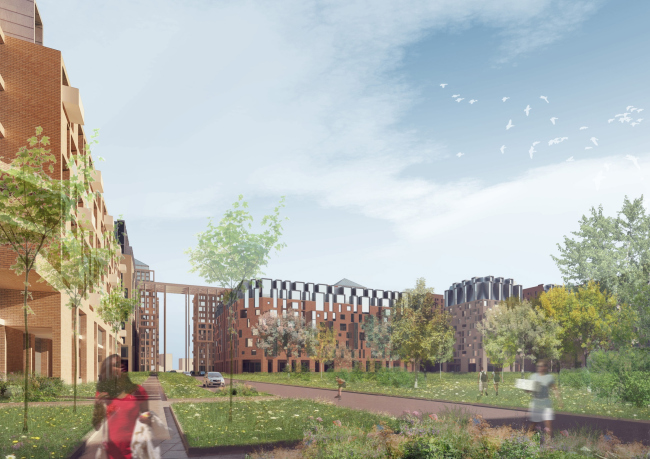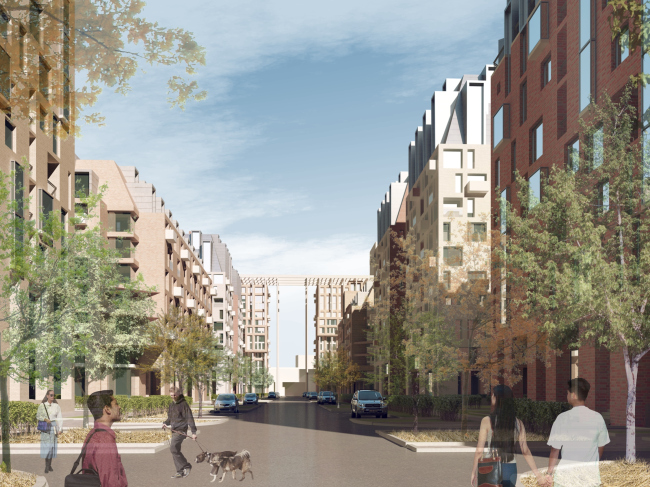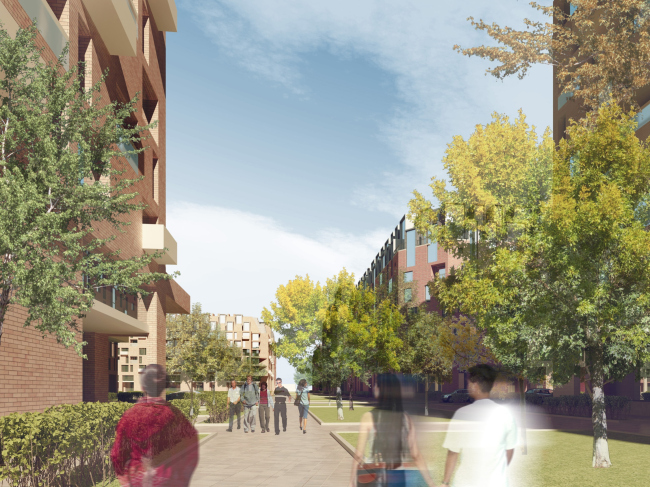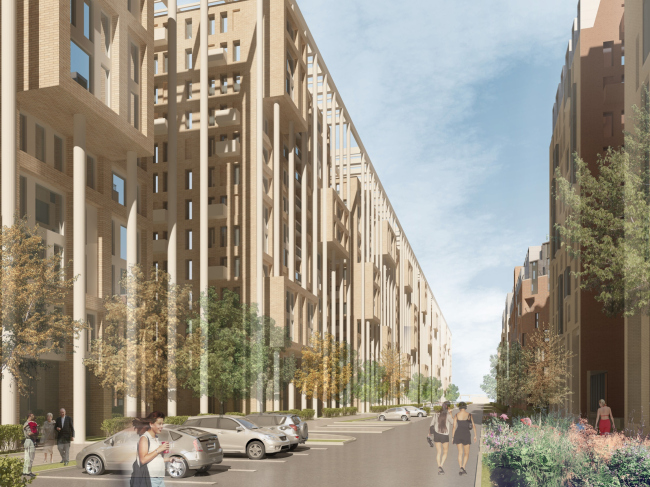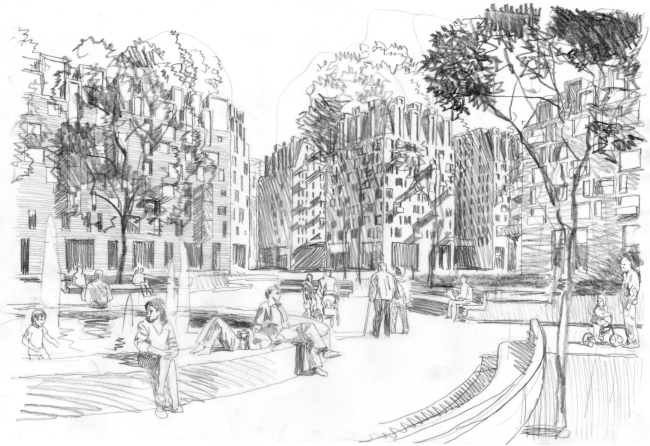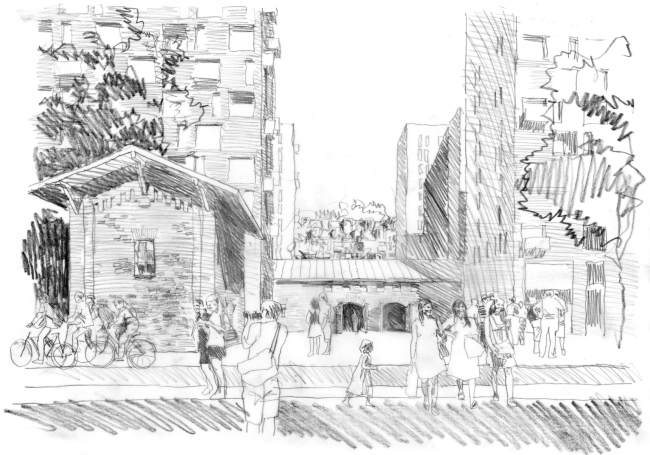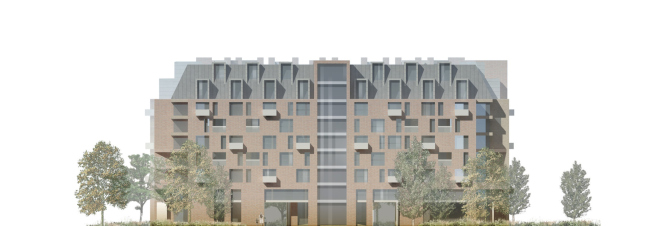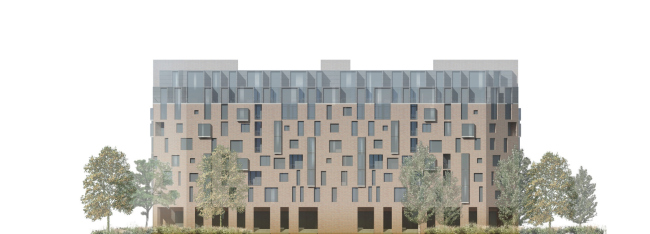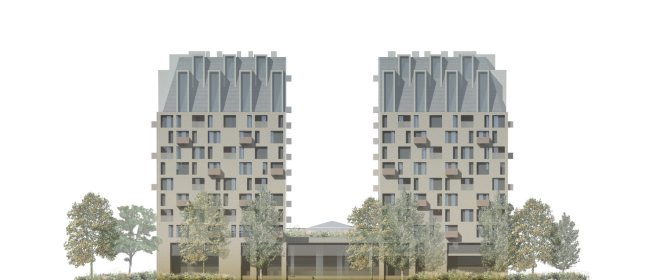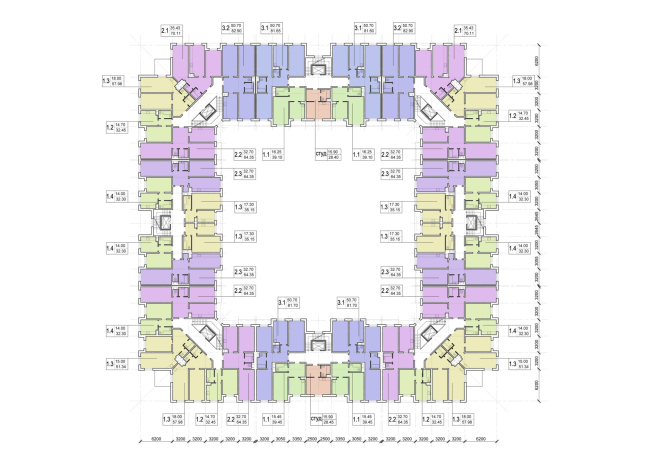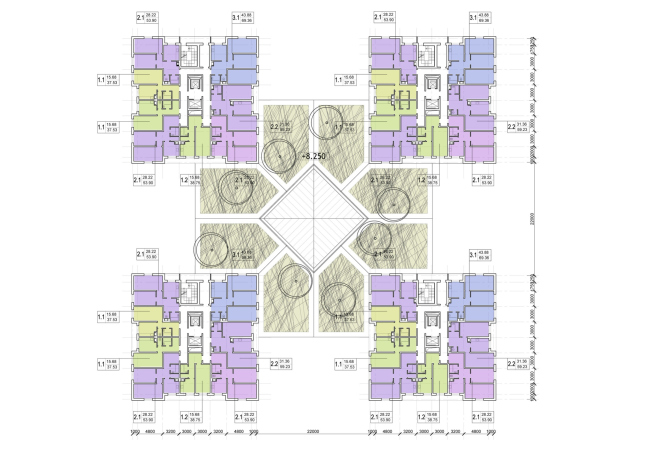|
Published on Archi.ru (https://archi.ru) |
|
| 19.07.2013 | |
|
Mathematics of Comfort |
|
|
Anna Martovitskaya |
|
| Architect: | |
| Nikita Yavein | |
| Studio: | |
| Company: | |
|
Designing a new residential complex in the Nevsky district of Saint Petersburg, "Studio 44" treated it as a "city within a city", a place that is self-sufficient, comfortable to live in, and complete with all the necessary elements of the traditional city environment. The land site, upon which the new residential cluster
will be built is located between the Oktyabrskaya Embankment and the territory
of the plant ZAO "Plastmassy". On its north side, it is limited by
the
Nikita Yavein and his team started their work on this
project by analyzing the technical and economic specifications put forward by
the customer. In fact, the idea to liken the new residential area to a
self-sufficient city sprang out from the commission figures: a total area of
real estate of some half million square meters and a population of as much as
13.5 thousand people in fact IS a small city. The incoherent and chaotic
planning structure of the former industrial park is changed, according to the
architects' proposal, by the classical orthogonal grid that actually serves as
the basis for the construction of the "perfect city". The model that inspired many generations of
architects, made the most considerable influence on the planning organization
not only of
Such town-planning module with its grid of streets,
though, was chosen not only in token of respect to the historical prototypes
but, above all, for its town-building benefits - it is this planning mode that
guarantees the future complex a comprehensible logic of movement and the
opportunity for its inhabitants to easily find their way around. The meridians
of roads that connect the streets of Novoselov and Telmana, will accommodate
the traffic flows, while the perpendicular to them pedestrian boulevards will connect
the The composition nucleus of "The Perfect
City" and its centerpiece is the square with a small green park -
"Studio 44" designs it as a green area completely free of any
buildings. "This will be something like a park in the center of the
The dimensions of the planning module predetermine the
type of the housing, each separate block being occupied by one residential
complex. This not only promises to make the whole structure of the new district
as clearly understandable as possible but also is the optimum layout in terms
of defining the construction priorities and subsequent operations of the
buildings.
Into the "cells" of their mathematically
calibrated grid, the authors inscribe two types of complexes placing them in a
staggered order - one type for the families and one type for the young couples.
The first type is a "block-house" with a closed perimeter and a courtyard,
the second consists of 4 "isolated" volumes that fix the corners of
the block and share a common podium. "They are totally different in their
character - Nikita Yavein explains - The "family" houses are
introverts, while the houses meant for the young couples and students consist
in fact of four independent volumes, which enhance the individuality of its
tenants, as well as their openness to the outside world".
From the architectural standpoint, though, the two
types of the complex are designed all but alike: in both cases brick prevails
(sometimes red and sometimes almost beige), the facades get their share of
extra tectonics thanks to the numerous bay windows, while the silhouettes at
large are made more dramatic at the expense of their upper floors that are designed
as mansards and decorated with the square braces of the window openings. It is
clear that the "a-la loft" style was not chosen by accident - the
authors seek to stress the industrial "origin" of the land site and
create the appropriate frame for the objects of industrial architecture that
are preserved here. The latter, it should be said, are quite numerous here: it
is planned that at least 6 buildings will be remodeled and fixed to fit the new
functions, including the main factory building with its water tower, the
coursed rubble storage building, the fire shed, and the former production
facility of "Tornton" wool factory.
The architects deliberately design the new houses less
tall than the construction regulations allow for (9-13 floor out of the allowed
17). The exception is the two residential high-rises about Along the south front of the construction and parallel
to the
NoneNoneNoneNoneNoneNoneNoneNoneNoneNoneNoneNoneNoneNoneNoneNoneNoneNoneNoneNoneNoneNoneNone |
|
